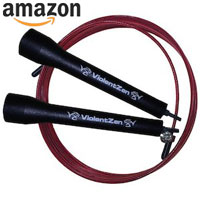This post will only look at “full stop” vs “touch & go” when you’re deadlifting. Check out this video real quick and then read on….
(Current BW: 175.5lbs)
I’m not going to get into conventional versus sumo style deadlifting (in detail). I think they both have a place in your workouts, but I personally prefer conventionally because it’s more comfortable and I can actually lift more. However, with that said, the times that I have trained sumo style has really helped my conventional deadlifts and actually helped squats too. (Sumo is great for building hip strength).
Ok… Sooo… I’ve always said, “It’s called the ‘deadlift’ for a reason”. You should stop at the bottom. However, now I can see how touch & go could be beneficial. And, it’s ‘Touch & Go’, not bounce and go. Plus, it’s much more difficult to hold your breath, or take another breath at the bottom (if you can) when stopping completely.
For me, I have no problem pulling the weight off the floor. My sticking point is right around my knees because my hamstrings aren’t strong enough. Grrrr!
Besides doing rack pulls, I figured that trying touch and go could actually help me out a bit. It conserves a bit of energy off the floor and then let’s me overload my sticking point with a couple reps I probably could not have done otherwise.
Here’s a quick pros and cons list as I see it when it comes to Full Stop vs. Touch & Go deadliest. I just wrote these out real quick and I’m sure there are more so feel free to add any in the comments.
Pros for Full Stop Deadlift:
- Develops pulling off the floor (which is great if that’s your sticking point)
- Requires maximal effort on every rep like it’s the first rep again
- No chance of “bouncing” the weight and cheating
- You can set the weight down much faster so you don’t waste any energy for your next rep
Cons for Full Stop Deadlift:
- You “should” completely reset with each rep (unless you know what you’re doing). Completely reset, meaning stand up, set your feet, take your big breath, and go again. (I am comfortable taking a breath at the bottom when needed, or getting 2-3 reps in before needing another breath)
- There’s a tendency to not reset completely and attempt a full breath at the bottom to get another rep in. While this ‘can’ work, it could also get you hurt if you’re out of position or you don’t get the same amount of pressure from the breath to support your core.
- It’s harder
Pros for Touch & Go Deadlift:
- You can do more! Duh
- If your sticking point is higher (not off the floor), then you can really work it by getting a few more reps in.
Cons for Touch & Go Deadlift:
- You can get lazy and start bouncing the weight off the floor.
- Your core can lose stability if you start bouncing
- It can cause you to get off balance if one side of the bar hits the ground before the other. (As it did in my 2nd rep of the video)
I really should shoot videos about this stuff instead of trying to explain it through writing. ha



{ 0 comments… add one now }